New York Mafia boss Frank Costello survived gang wars, police scrutiny, and an assassination attempt on his way to becoming one of the city's wealthiest mobsters.
As far as mob bosses go, there were three things that set Frank Costello apart: he never carried a gun, he testified at a Senate hearing on organized crime without the protection of the Fifth Amendment, and despite his multiple arrests and assassination attempt, he died a free man at age 82.

WIkimedia CommonsFrank Costello at the Kefauver hearings, during which the U.S. Senate began probing organized crime starting in 1950.
Frank Costello was arguably one of the most successful gangsters of all time. What’s more, the “Prime Minister” of the mob was the man who inspired The Godfather himself, Don Vito Corleone. Marlon Brando even watched footage of Frank Costello’s appearance at the widely-publicized Kefauver Senate hearings and based both his character’s calm demeanor and raspy voice on Costello.
But before he became one of the wealthiest mob bosses in history, Frank Costello had to claw his way to the top. And not only did Costello succeed, he lived to tell the tale.

How Frank Costello First Joined The Mob
Frank Costello was born Francesco Castiglia in Cosenza, Italy in 1891. Like most of the American Mafia, Costello immigrated to the United States with his family as a boy in the early 1900s. His father had moved to New York several years before the rest of his family, and opened a small Italian grocery store in East Harlem.
Upon arriving in New York, Costello’s brother became involved in local street gangs who engaged in petty theft and local small crimes.
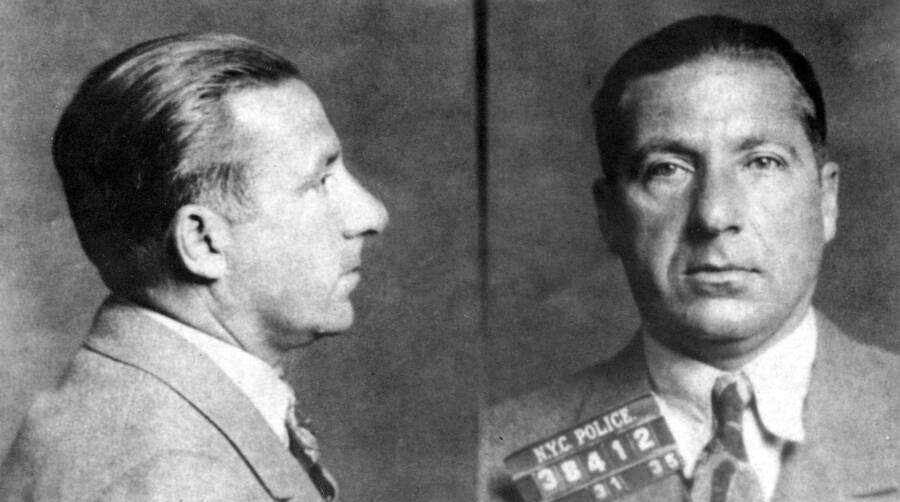
NY Daily News Archive via Getty ImagesAn early mugshot of Costello sometime in the 1940s.
Before long, Costello was involved as well – between 1908 and 1918 he would be arrested three times for assault and robbery. In 1918 he officially changed his name to Frank Costello, and the following year, he married his childhood sweetheart and sister of his close friend.
Unfortunately, that same year he served 10 months in jail for armed robbery. Upon his release, he vowed to give up violence, and instead use his mind as his money-making weapon. From then on, he never carried a gun, an unusual move for a Mafia boss, but one that would make him all the more influential.
“He was not ‘soft,'” Costello’s lawyer once said of him. “But he was ‘human,’ he was civilized, he spurned the bloody violence in which previous bosses had reveled.”
After his several jail stints, Costello found himself working for Harlem’s Morello Gang.
While working for Morello, Costello met Charles “Lucky” Luciano, the leader of the Lower East Side Gang. Immediately, Luciano and Costello became friends and began to merge their respective business ventures.
Through this, they connected with several other gangs, including that of Vito Genovese, Tommy Lucchese, and Jewish gang leaders Meyer Lansky and Benjamin “Bugsy” Siegel.
Coincidentally, the Luciano-Costello-Lansky-Siegel venture came to fruition at the same time as Prohibition. Shortly after the passage of the 18th amendment, the gang began a highly profitable bootlegging venture backed by king gambler and fixer of the 1919 World Series, Arnold Rothstein.
Bootlegging soon brought the Italian gang into cahoots with the Irish mob, including mobster Bill Dwyer, who had been operating a rum-running operation by this point. Together the Italians and the Irish formed what is now known as the Combine, a deeply rooted bootlegging system with a fleet of ships that could transport 20,000 crates of liquor at a time.
At the height of their power, it seemed that the Combine couldn’t be stopped. They had several U.S. Coast Guardsmen on their payroll and smuggled thousands of bottles of liquor into the streets every week. Of course, the higher the mobsters climbed, the farther they had to fall.
Costello Moves Up The Ranks
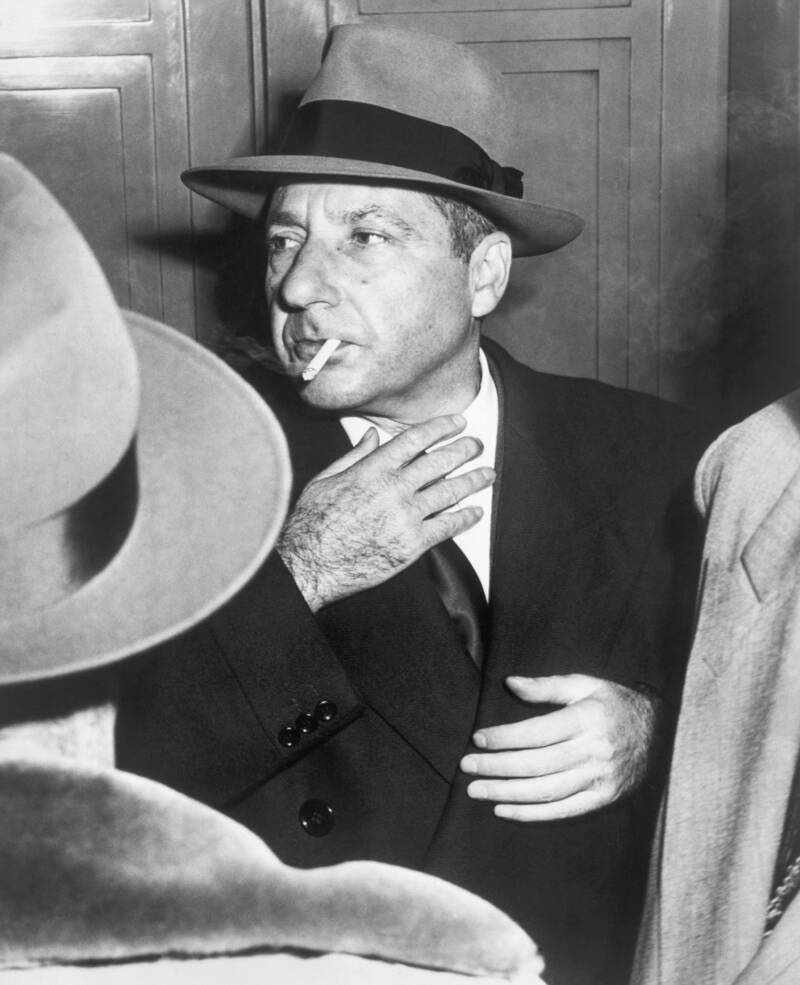
Getty ImagesUnlike most mobsters, Frank Costello would have nearly 40 years between prison sentences.
In 1926, Frank Costello and his associate Dwyer were arrested for bribing a U.S. Coast Guardsman. Luckily for Costello, the jury deadlocked on his charge. Unluckily for Dwyer, he faced a conviction.
Following Dwyer’s imprisonment, Costello took over the Combine much to the dismay of Dwyer’s loyal followers. A gang war broke out between those who believed Dwyer was in prison because of Costello and those who were loyal to Costello, ultimately causing the Manhattan Beer Wars and costing Costello the Combine.
For Frank Costello, however, it wasn’t an issue. He continued to work with Lucky Luciano on his underworld ventures including floating casinos, punchboards, slot machines, and bookmaking.
In addition to cavorting with criminals, Costello made a point to become friendly with politicians, judges, policemen and anyone else he felt could help his cause and bridge the gap between the criminal underworld and Tammany Hall.
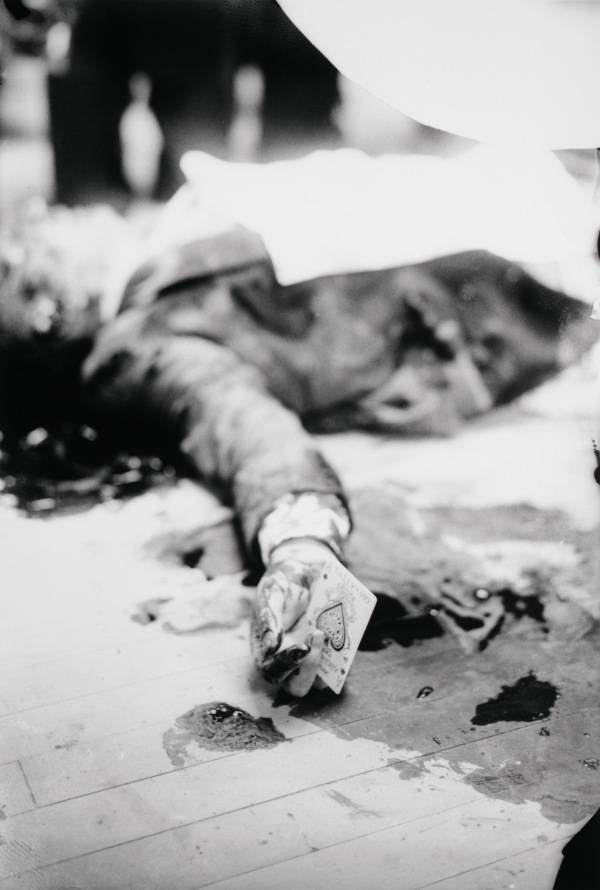
Bettmann/Getty ImagesMafia kingpin Joe Masseria holds the ace of spades which is known as “the death card” following his 1931 murder on the orders of infamous gangster “Lucky” Luciano in a Coney Island restaurant.
Due to his connections, Costello began to be known as the Prime Minister of the Underworld, the man who smoothed over disagreements and greased the wheels for anyone who needed his assistance.
In 1929, Costello, Luciano, and Chicago gangster Johnny Torio, organized a meeting of all the American crime bosses. Known as the “Big Seven Group”, the meeting was the first step in organizing an American National Crime Syndicate, a way to keep tabs on all criminal activity, and maintain some semblance of order in the underground community.
The three bosses, along with Jersey’s Enoch “Nucky” Johnson and Meyer Lansky, met in Atlantic City, New Jersey, and changed the course of the American Mafia for good.
However, as with any advancement in the Mafia, there were those who believed that the rules didn’t apply to them and that total control over the entire organization was the only way to live.
Salvatore Maranzano and Joe Masseria had not been invited to the Big Seven Group, as their belief in an “Old World” Mafia system wasn’t in line with Costello’s vision for the Mafia’s advancement.
While the younger mobsters were discussing the order and attempting to keep the balance between the families, Masseria and Maranzano were entering into one of the most infamous Mafia wars of all time: the Castellamarese War.
Masseria believed he was entitled to a dictatorship over the Mafia families and began to require a fee of $10,000 from Maranzano family members in exchange for protection. Maranzano fought against Masseria and formed an alliance with the “Young Turks,” the younger faction of the Mafia led by Luciano and Costello.
However, Luciano and Frank Costello had a plan. Rather than ally themselves with either family, they plotted to end the war once and for all. They contacted the Maranzano family and vowed to turn on Joe Masseria if Salvatore Maranzano would kill him. Of course, Joe Masseria was killed in a spectacularly bloody fashion in a Coney Island restaurant just a few weeks later.
However, Costello and Luciano had never planned to ally themselves with Maranzano either – they had just wanted Masseria out of the way. Following Masseria’s death, Luciano hired two Murder Inc. hitmen to dress as IRS members and gun down Salvatore Maranzano in his New York Central Building office.

NY Daily News Archive via Getty ImagesCostello beams as he’s released from Rikers Island in 1957.
The death of Salvatore Maranzano effectively ended the Castellamarese war and solidified Luciano and Costello’s place at the head of the crime syndicate.
Becoming Boss Of All Bosses
Following the Castellamarese War, a new crime family emerged led by Lucky Luciano. Frank Costello became consigliere of the Luciano crime family and took over the slot machine and bookmaking endeavors of the group.
He quickly became one of the family’s top earners and vowed to put slot machines in every bar, restaurant, cafe, drugstore and gas station in New York.
Unfortunately for him, then-Mayor Fiorello La Guardia interfered and infamously dumped all of Costello’s slot machines into the river. Despite the setback, Costello accepted an offer from Louisiana governor Huey Long to put slot machines throughout Louisiana for 10 percent of the take.
Unfortunately, while Costello was creating a slot machine empire, Lucky Luciano wasn’t getting so lucky.
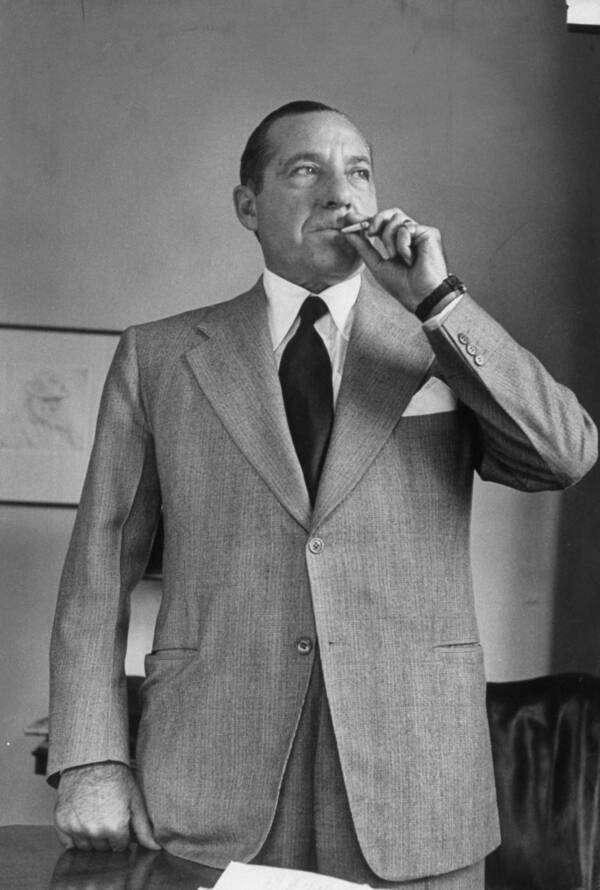
Leonard Mccombe/The LIFE Images Collection via Getty Images/Getty ImagesFrank Costello was known for his “humanity” as a leader.
In 1936, Luciano was convicted of running a prostitution ring and sentenced to 30-50 years in prison and deported back to Italy. Vito Genovese temporarily took control of the Luciano family, but just a year later he too landed himself in hot water and ended up fleeing home to Italy to avoid prosecution.
With the head of the Luciano family and its underboss both in trouble with the law, the leadership duties fell to the consigliere – Frank Costello.
With his booming slot machine business in New Orleans and the illegal gambling rings he had set up in Florida and Cuba, Frank Costello became one of the most profitable members of the Mafia.
But this position also landed him in the middle of one of the biggest Senate hearings on organized crime of all time.
Frank Costello’s Fateful Testimony At The Kefauver Hearings
Between 1950 and 1951, the Senate conducted an investigation on organized crime headed by Senator Estes Kefauver of Tennessee. He called several dozen of America’s finest criminals for questioning including over 600 gangsters, pimps, bookmakers, politicians, and mob lawyers.
For weeks these players of the underground testified before Congress and the entire charade showcased on television.
Costello was the only mobster who agreed to testify during the hearings and forewent taking the Fifth, which would have protected him against incriminating himself. The real-life Godfather hoped that in doing this, he could sway the court into believing he was a legitimate businessman with nothing to hide.
It proved to be a mistake.
Though the event was televised, the cameramen showed only Costello’s hands, keeping his identity as secret as possible. Throughout the hearing, Costello chose his answers carefully and psychologists noted that he seemed nervous.
Toward the end of Costello’s time on the stand, the committee asked, “What have you done for your country, Mr. Costello?”
“Paid my tax!” Costello responded, garnering a laugh. Shortly thereafter, Costello walked out of the hearing.
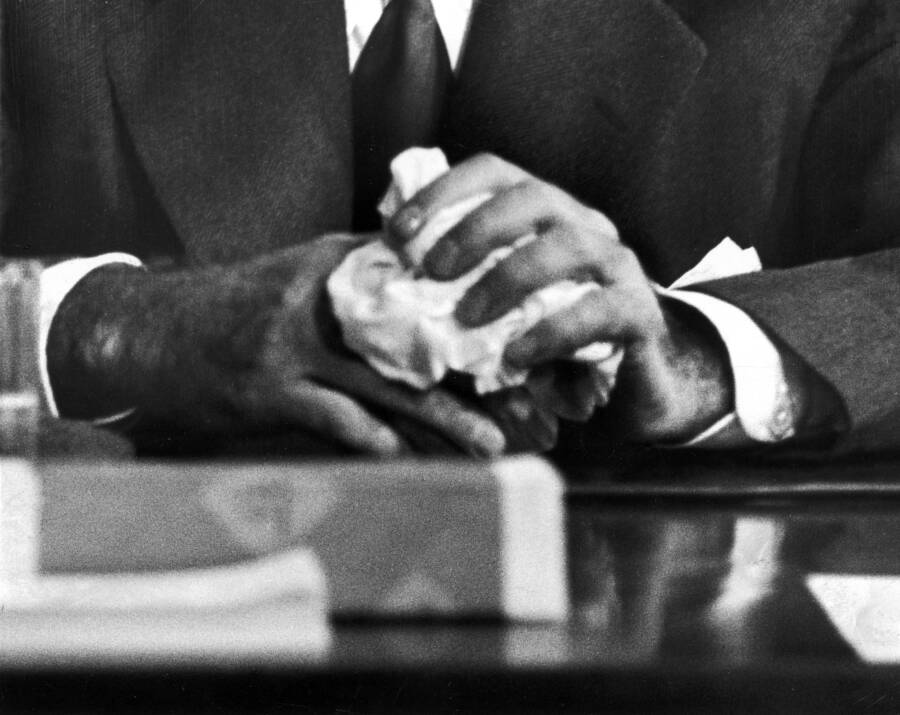
Alfred Eisenstaedt/The LIFE Picture Collection via Getty ImagesCostello allegedly appeared so anxious during the Kefauver Senate hearings that even children watching his hands on television thought he was guilty of something.
The fallout from the hearings threw Costello for a loop. After ordering the “elimination” of a gangster who had revealed embarrassing information at the hearings, Costello was charged with his murder, in addition to contempt of Senate for walking out of the hearing.
The next few years were some of the worst of Frank Costello’s life.
In 1951 He was sentenced to jail for 18 months, released after 14 months, charged again in 1954 with tax evasion, sentenced to five years but released in 1957.
An Attempt On The Godfather’s Life

Victor Twyman/NY Daily News Archive via Getty ImagesCostello was so diplomatic and so respected that he made amends with the man who tried to kill him.
As if multiple convictions, prison sentences, and appeals weren’t enough, in May of 1957, Costello survived an assassination attempt.
When Vito Genovese finally returned to the states in 1945 and was acquitted of his charges, he intended to resume control of the Luciano crime family. Costello had other plans and refused to give up power. Their feud lasted some 10 years until one day in 1957.
As Costello was heading for the elevator at the Majesty apartment building in New York City, Vincent “The Chin” Gigante shot at him from a passing car.
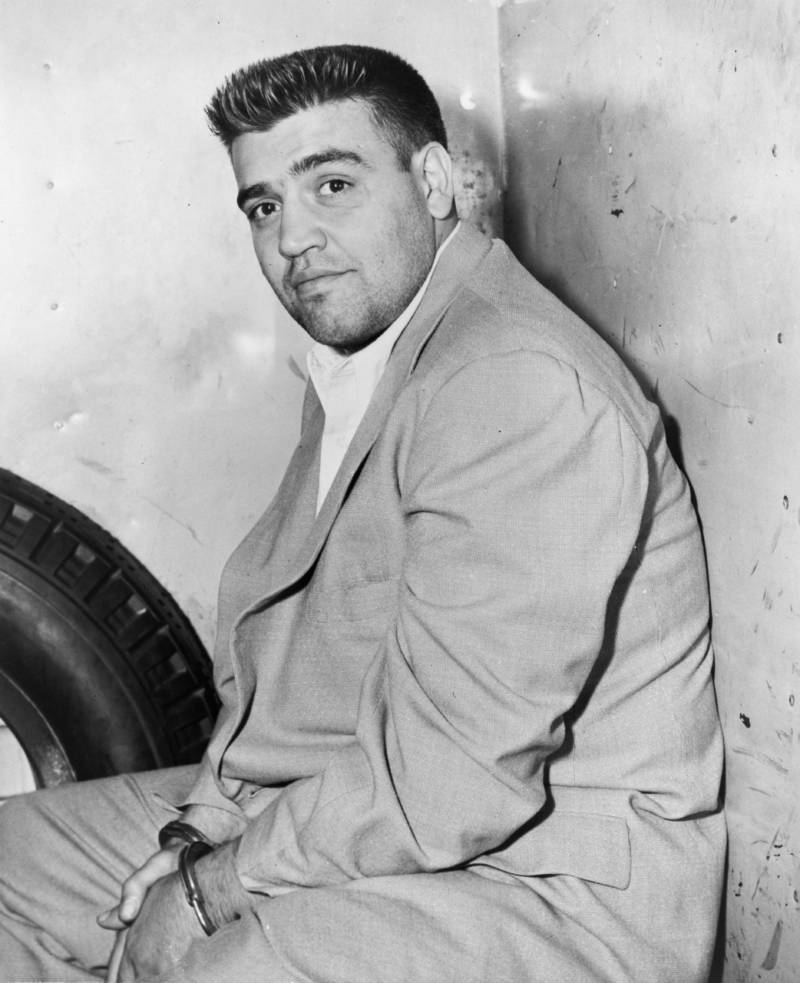
Phil Stanziola/Library of CongressVincent Gigante in 1957, the same year he attempted to shoot down Costello.
It was only due to Gigante shouting “This is for you, Frank!” and Costello turning his head toward the sound of his name at the last second that Costello survived the attack with only a glancing blow to the head.
It turned out that Vito Genovese had ordered the hit after patiently biding his time for the past 10 years in order to reclaim control of the Luciano family.
Shockingly, after surviving the attack, Frank Costello refused to name his attacker at trial and made peace with Genovese. In return for keeping control of his New Orleans slot machines and Florida gambling ring, Costello turned over control of the Luciano family to Vito Genovese.
The Peaceful Death Of Frank Costello And His Legacy Today

Wikimedia CommonsVito Genovese in prison, not long before his death in 1969.
Despite no longer being the “Boss of Bosses,” Frank Costello retained a certain air of respect even after his retirement.
Associates still referred to him as the “Prime Minister of the Underworld,” and many bosses, capos, and consiglieres paid visits to his Waldorf Astoria penthouse to seek his counsel on Mafia family matters. In his free time, he devoted himself to landscaping and participating in local horticulture shows.
The legacy continues today, even past his inspiring of The Godfather. Costello is featured in the new drama series titled Godfather of Harlem which stars Forest Whitaker as the titular character, mobster Bumpy Johnson.
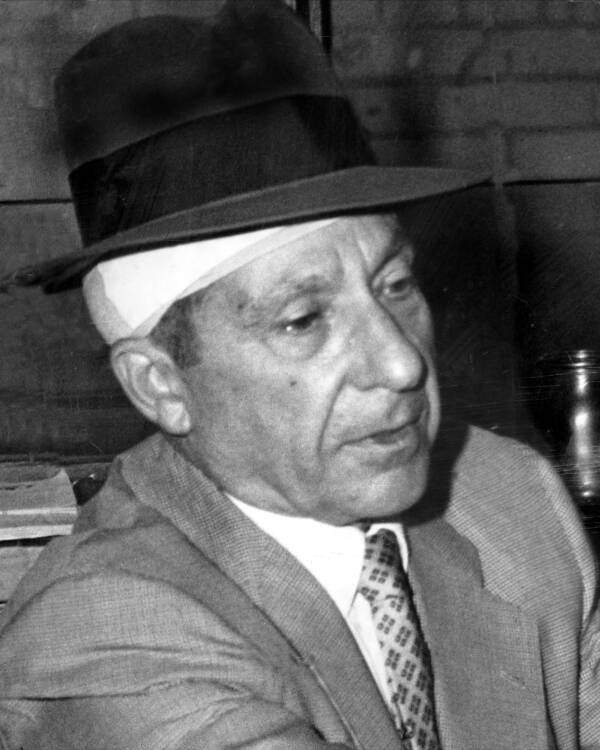
Nick Petersen/NY Daily News via Getty ImagesFrank Costello leaves West 54th Street stationhouse with his head bandaged following the assassination attempt on him.
In the show, Johnson requires Costello’s influence in the reelection of an ally, Rev. Adam Clayton Powell Jr. In real life, Johnson did have connections to Costello through Lucky Luciano and Gigante of the Luciano family.
Though he continued to be an invaluable source of advice to his associates, Costello’s bank account, however, was drained from all his legal battles and the real-life Godfather had to ask for loans from close friends on several occasions.
In 1973 at the ripe old age of 82, Frank Costello suffered a heart attack at his home. He died on February 18, becoming one of the only mob bosses to live a long life and die in his home of old age.
Next, read about Al Capone’s bloodthirsty brother Frank Capone. Then, check out the story of Frank Lucas, a real American gangster.







